1. Volume control?

Photo: gstockstudio/Depositphotos
According to the World Health Organisation Spain is the second noisiest country in the world after Japan. This would explain why several times a week I wish I had a universal mute button. Almost everywhere you go it’s loud.
In Spain people tend to live on top of each other in densely packed apartments which has created a phenomenon known as ‘radio patio’. The inner courtyards of apartment blocks act as perfect echo chambers broadcasting residents’ daily lives. With the windows open most of the year round you can’t help but hear it all. Family arguments, phone conversations, TVs blaring, food frying and a chorus of orgasms.
I’ve always thought that eating out in a restaurant should be a relaxing experience. Rarely the case. Background hubbub quickly reaches a boisterous cacophony where groups of diners are shouting over each other across the table. In fact, conversations in public places are anything but muted, whether you’re riding the metro, in the street or at the market. They’re often initiated with, ‘Oye!’. Hear me! Does anyone have a choice?
In bars you’ll need to bark your order to the waiter to stand a chance of getting served. I’ve realised that you need a certain kind of voice with a perfect pitch to cut through all of the ‘jaleo’. Something I do not possess.
In Spain the car horn is a preferred mode of communication. You’ll hear car horns more often than a Brit saying sorry. From a double punch on the steering wheel to continuous prolonged blasts the horn is used to announce your arrival, acknowledge a friend or scare a dog out of the way. If the traffic is particularly bad the driver will resort to simply leaning on the horn to get things moving.
Still, when the day is almost done, you can always take the dog out around the block for a relaxing bark before the rubbish collectors arrive in their truck at just before 1am.
2. Spatial awareness
Personal space in Spain is personal in the sense that it can be intimate. I’ve lost count of the times in bars when I’ve been moved to one side by a fellow customer and repositioned as if I were a bar stool. The pressing up against each other, pushing and the hand on the back manoeuvre are commonly adopted on the metro and on busses.
When having a long conversation with a group of friends, standing smack bang in the middle of doorways and pavements is preferred. They’ve seen you coming. Will they move out of the way? It doesn’t matter just dodge around them and into the road while carrying heavy shopping bags. Just don’t interrupt their loud conversation. When it comes to driving in Spain, the maximum distance between cars travelling along a motorway at 110km per hour is about 1 metre. I find it terrifying to watch. While on the subject of space and considerateness in the car, I’ve witnessed some truly comical not to say dangerous parking.
3. Adventures with customer service
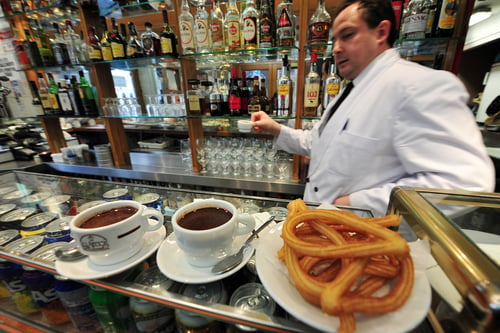
Photo: lucidwaters/Depositphotos
Whether you’re in a bar, shop, restaurant or bank, when customer service is good in Spain it’s great. When it’s bad, it’s terrible. In my years of living here I’ve found that poor ‘atención al cliente’ is a regular occurrence. Now, I suppose it could be argued that the direct, abrupt and often surly interactions are preferable to the overly gushy, forced and fake “have a nice day!” approach of some Anglo Saxon countries.
I’ve found that the customer in Spain is not king. Often your presence is somehow a nuisance and, that your custom is actually detrimental to the mood of many in customer service positions. The encounter is purely transactional. I’ve witnessed employees in banks complaining about how tired they are to their colleagues in front of customers, bar staff arguing with each other while serving your drinks. You become invisible as a customer if a group of staff are having a good chat. I love the slower pace of life in Spain in many respects but this can become frustrating if for example you want to have a coffee, pay the bill and go. There’s a lot of waiting around. Some of my Spanish friends adopt the ‘sinpa’ approach. Make it look as if you’re about to leave without paying and staff will soon take notice.
Spaniards seem to have a high tolerance threshold and are rarely critical or demanding when faced with poor service. One solution is to become a regular. A bit like the tapas that get bigger and better with each round of drinks you buy, so the level of customer service tends to improve with each repeat visit.
In the defence of poor customer service, I think economics has a lot to do answer for.
‘La crisis’ has caused a situation where many businesses try to offer everything with the absolute minimum of staff or resources.
4. Daily timetable

Siestas may not be a thing but long lunches still are. Photo: Justyna Rawińska / Flickr
While Spaniards are still finishing off their ‘natillas’ from the daily lunch menu, back in the UK workers have already been back in the office for 2 hours. Yes, Spain is infamous for keeping late hours. This is something I still really struggle with. Especially when it come to mealtimes. I still can’t get my head around eating lunch at 2:30/3pm and sitting down to and evening meal at 10pm, sometimes later on a weekend. The pregnant pause in the middle of the day when many people still head home to eat lunch and therefore finish work at 7 or 8pm. Many of my Spanish friends are divided on this. Half of them agree that they would prefer to take 30 mins for lunch and get out of the office at 6pm. For others a longer break in the middle of the day is still sacred. Mealtimes tend to dictate the timing of everything else with prime TV shows starting at 10pm and finishing well after midnight. I guess that explains all the dark circles on the morning commute.
5. Eating out is as cheap as patatas fritas
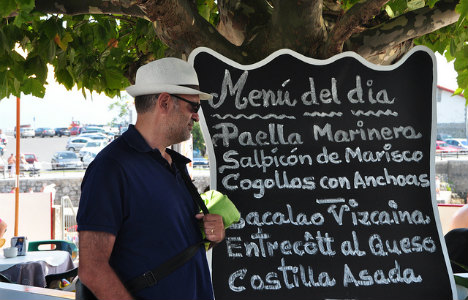
Photo: CPGXK/Flickr
Three words. Menú. Del. Día. A culinary tradition and phenomenon which is intrinsic to Spanish life and incredible value for money. It still amazes and delights me that it’s possible to get a three course lunch, often with a coffee, wine and bread for between 10 and 15 euros. In my local bar they offer a menú del día for a mere 8 euros and the quality is good. Wine too, is dangerously cheap in Spain at only around €1.80 a glass it pains me to pay a fiver or more back in the UK. And a three course meal for a ten quid. Forget it.
6. How civilised the Spanish are when it comes to drinking
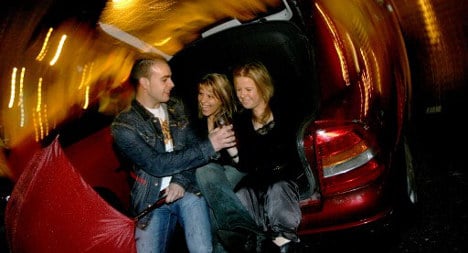
Photo: AFP
It might be loud but it’s certainly way more civilised than you’re average British High Street on a Friday or Saturday night. Binge drinking is not something that has ever caught on in Spain, thankfully. Even the ‘botellón’ is less common than before and when you do stumble across a bunch of teenagers sitting around a bottle of whiskey or red wine and coke, it’s a jovial affair. Spaniards seem to have far more respect for alcohol even given how cheap it is. They drink more slowly and without the aim of getting hammered.
At 2am in a Spanish city centre, you’re not going to see anyone puking into the gutter, getting to fights of staggering barefoot through the streets, shoes in hand. Well, unless they’re guiris of course.
7. The Spanish are touchy-feely
Spaniards are much more tactile than us Brits it seems and I love how expressive Spaniards can be. But for me and other British friends this used to be a source of confusion and even embarrassing misunderstandings. In Spain, people touch each other during conversations. It’s because Spaniards are warm and in some ways I think it’s a way for them to engage more deeply with the person they are conversing with, especially if they’re excited about something or feel strongly about something. This ritual of taps, stokes, prods and grasps on the arm, leg or shoulder can often be misconstrued by northern Europeans as flirtation. Not so. Well, maybe it could but it’s certainly not a given. In the past mistook these gestures to mean a girl was romantically interested. How wrong I was!
8. Viva small businesses!
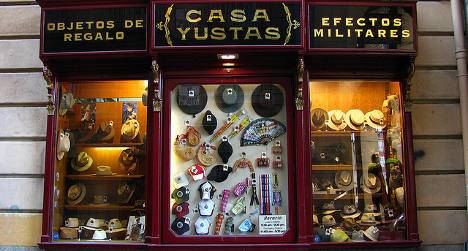
File photo: j.labradro/Flickr
What I love about Spain is that people still value and remain loyal to independent shops.
In any Spanish city centre or everyday neighbourhood you still find dozens of independent greengrocers, butchers, bakers, grocery shops, pharmacies and ironmongers, all with their own unique character and dated, down-at -heel charm. Compared to the UK with its generic high streets monotonously lined with the same big chains of shops, bars and restaurants, for me Spain is like stepping back in time 30 years. In a good way.
Walk into any everyday Spanish bar and you’ll notice the interior probably hasn’t been updated since at least the 1970s. You’ll see a couple of octogenarians propping up a bar, grunting to each other as they pick at a slab of tortilla and sip thimbles of beer, their bespectacled eyes glued to a bulky TV clamped to the wall. These are for the most part still family-run businesses that jostle for attention among the big chains that are gradually encroaching on their territory. Sadly, as owners retire the bars disappear especially as these days their children aren’t keen to take over the family business. May they continue to survive.
9. Lack of respect for public spaces
There are times when I think litter bins, ashtrays and toilets appear to be fairly inconsequential. The street itself is multi-purpose and serves all three functions day or night. Cigarette flicking could become a national sport. That’s something that really surprises me, that people make no effort to even hide the fact that they’re littering the street. In my hometown there’s a mandatory on the sport fine of £80 for dropping litter.
I asked my Spanish friends if the same system could work here. They concluded that no because nobody would bother to enforce it. The saddest thing I’ve seen in this respect was at one of the many reservoirs in the countryside around Madrid where people go to swim in the summer months. The whole area was strewn with the remnants of picnics that people had just dumped, even though there were plenty of bins next to the car park. The council had put up notices threaten to close the reservoir to the public if the situation continued.
Paul Burge is a former BBC journalist who moved from Oxford, UK to Madrid in 2013 where he now hosts the highly entertaining When in Spain a weekly podcast show about life in Madrid and beyond. He works as a freelance journalist and English teacher. Follow Paul’s observations and advice about living in Spain on Facebook, Instagram, Twitter and his new YouTube channel. This article was first written before the Covid-19 pandemic.
READ ALSO: These are the 17 absolute worst things about living in Spain


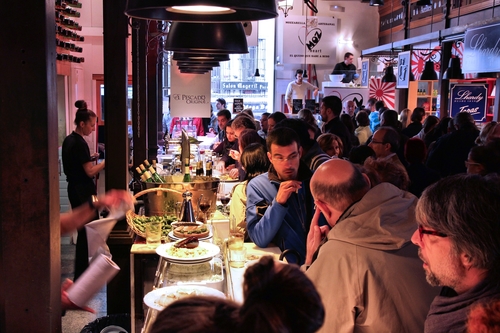
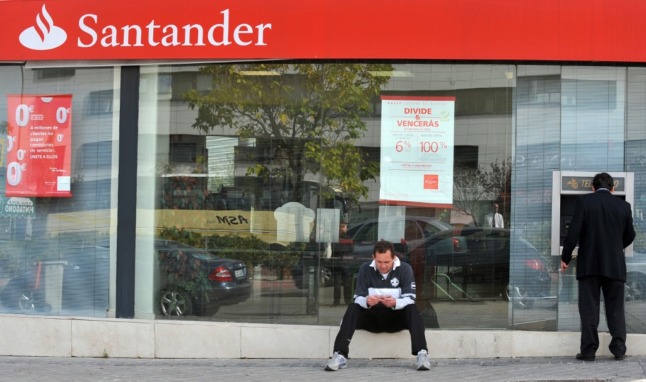
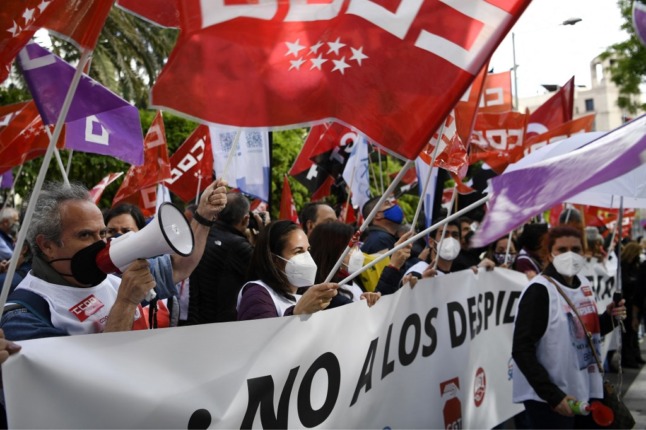

 Please whitelist us to continue reading.
Please whitelist us to continue reading.
Member comments